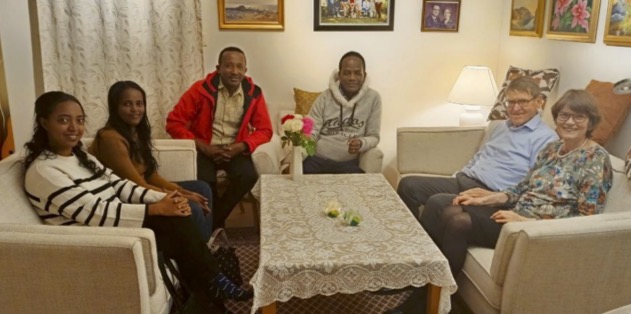 Anopheles stephensi is spreading rapidly to urban settings in Ethiopia. It is a common malaria-transmitting mosquito in South Asia and the Arabian Peninsula and is believed to have spread to eastern Ethiopia in 2016. However, since 2023, there have also been reports of its presence in Hawassa, and recently we detected it in Arba Minch. We have submitted this data for publication.
Anopheles stephensi is spreading rapidly to urban settings in Ethiopia. It is a common malaria-transmitting mosquito in South Asia and the Arabian Peninsula and is believed to have spread to eastern Ethiopia in 2016. However, since 2023, there have also been reports of its presence in Hawassa, and recently we detected it in Arba Minch. We have submitted this data for publication.
Much effort has been made to understand its spread and relation to its environment. Understanding how An. stephensi behaves and contributes to malaria transmission compared with the existing local vectors is critical for designing strategies for containment. Our findings in Arba Minch suggest that the rapid geographic expansion of this invasive species may be linked to major transportation corridors.
The team in Arba Minch, in collaboration with partners from Norway and the Armauer Hansen Research Institute (AHRI) in Addis Ababa, has commenced work to enhance our comprehension of the behaviour of this mosquito and its role in malaria transmission. We aim to develop innovative control strategies to manage this rapidly spreading vector.
Preprint of publication:
Fekadu Massebo, Temesgen Ashine, Nigatu Negash, Thomas Minda, Bernt Lindtjørn, and Endalamaw Gadisa. The expansion of an invasive malaria vector: Anopheles stephensi detection in Arba Minch town in the southern Rift Valley of Ethiopia, 14 February 2024, PREPRINT (Version 1) available at Research Square [https://doi.org/10.21203/rs.3.rs-3946371/v1]
See the webpage for more developments on this research.
 During the past six weeks, students and staff from the Senuph program at Hawassa and Arba Minch Universities attended courses at the Centre for International Health at the University of Bergen.
During the past six weeks, students and staff from the Senuph program at Hawassa and Arba Minch Universities attended courses at the Centre for International Health at the University of Bergen. The upper picture shows four participants from Hawassa in the health economics course, and the lower photo shows students attending a course on experimental epidemiology visiting Magnhild and Bernt Lindtjørn.
The upper picture shows four participants from Hawassa in the health economics course, and the lower photo shows students attending a course on experimental epidemiology visiting Magnhild and Bernt Lindtjørn.
